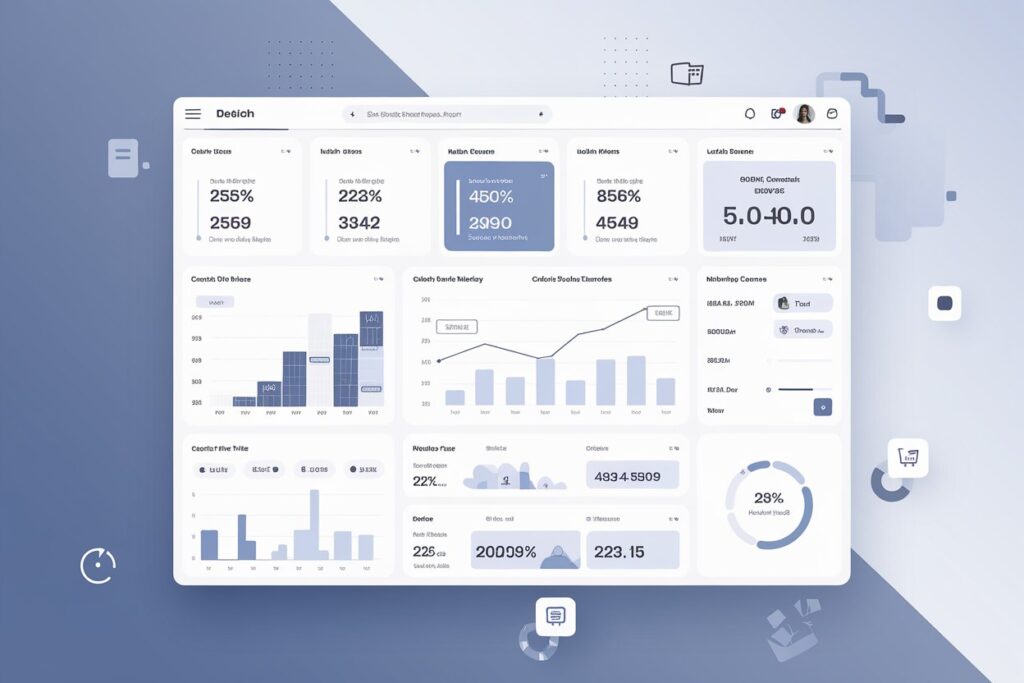In Amazon’s highly competitive marketplace, data is at the core of making informed decisions. Understanding which data is crucial for your business and using it effectively can help sellers, SaaS companies, data providers, and tool developers enhance their sales performance, optimize product listings, and gain a competitive edge. This article provides an in-depth look at the key data points Amazon operators should focus on, various sources of this data, and how to ensure its timeliness and accuracy.
Sales Data
Sales data is the backbone of any Amazon operation. Sellers need to closely monitor their sales performance to make informed decisions about their business strategy. Key sales metrics include:
- Daily/Monthly/Annual Sales: These figures reflect the overall sales trends, helping sellers identify peak demand periods for their products.
- Revenue and Profit Margins: Tracking the revenue and profit margins for each product helps in optimizing product mix and pricing strategies.
- Order Return Rates: A high return rate could indicate potential issues with product quality or discrepancies between product descriptions and actual performance.
Customer Behavior Data
Customer behavior data provides insights into how users interact with your products. This data helps operators understand the consumer journey. Key metrics include:
- Click-Through Rate (CTR): This measures the attractiveness of a product’s detail page.
- Conversion Rate: The percentage of users who clicked on a product and completed a purchase.
- Time Spent on Product Page: The longer consumers spend on a product page, the more interested they are likely to be in the product.
Competitor Analysis Data
Competitor data is crucial in a competitive marketplace like Amazon. Keeping an eye on what your competitors are doing can help you adjust your strategy accordingly. Important data points include:
- Price Changes: Monitoring competitor pricing strategies helps adjust your own pricing to stay competitive.
- Market Share: Understanding how your competitors are performing in terms of market share gives a clear picture of your position in the market.
- Product Review Comparisons: Analyzing feedback on competitors’ products can help improve your own offerings.
Product Inventory and Supply Chain Data
Efficient inventory management is critical to avoid stock-outs or overstocking, which is especially important for medium and large-scale sellers. Key inventory and supply chain metrics include:
- Real-Time Inventory Levels: Ensuring that high-demand products are always in stock to avoid lost sales.
- Restock Cycles: Planning restock cycles based on historical sales data to keep the supply chain running smoothly.
- Logistics and Shipping Status: Tracking the progress of product shipments to ensure timely delivery to customers.
Advertising and Marketing Data
Advertising plays a pivotal role in Amazon operations, especially when it comes to Pay-Per-Click (PPC) advertising. Key advertising metrics include:
- Return on Ad Spend (ROAS): The ratio of ad spend to actual sales, used to measure the effectiveness of advertising campaigns.
- Advertising Cost of Sales (ACoS): The percentage of ad spend relative to sales revenue, with lower ACoS indicating higher profitability from ads.
- Ad Impressions: The number of times an ad is displayed, providing insights into the reach and visibility of your campaigns.
Customer Reviews and Feedback Data
Customer reviews and feedback directly influence sales and product rankings on Amazon. Regularly analyzing this data is critical for maintaining a good reputation. Key data points include:
- Product Ratings: Higher-rated products tend to convert more sales.
- Negative Review Analysis: Identifying the reasons behind negative reviews helps improve product quality and customer satisfaction.
- Number of Reviews: A higher volume of reviews can increase trust in the product and improve its ranking.
Data Sources and Tools
Acquiring accurate and timely data is essential in Amazon operations. Different types of data can be sourced from various channels, but each source comes with its own advantages and limitations.
1. Amazon’s Official Data
Amazon provides a wealth of official data to sellers through Seller Central and the advertising platform. This includes:
- Sales and Order Data: Sellers can export detailed sales reports directly from the Amazon dashboard.
- Advertising Data: Amazon’s advertising platform provides data on ad impressions, clicks, conversions, and spend.
- Customer Reviews: Sellers can view and manage customer feedback and reviews.
- Store Performance Data: Metrics like return rates, customer complaints, and order defect rates are also available.
Limitations: While Amazon’s official data is highly accurate, it only provides insights into your own store’s performance. It does not offer visibility into competitors’ data or broader market trends. Additionally, some data may not be updated in real-time.
2. Your Own Store Data
In addition to Amazon’s official data, sellers can use internal tools and systems to track various operational metrics:
- Custom Sales Reports: With CRM or ERP systems, sellers can generate customized reports for more detailed insights.
- Customer Behavior Data: Using tools like Google Analytics, sellers can track user behavior on their external websites or marketing channels.
Limitations: Like Amazon’s data, internal store data primarily focuses on your operations and doesn’t provide insight into the wider market or your competition.
3. Third-Party Tools and Services
Many third-party tools like Helium 10 and Jungle Scout provide extensive Amazon data, including:
- Keyword Research: These tools help identify high-performing keywords to optimize product listings.
- Competitor Analysis: Some tools estimate competitor sales, pricing, and inventory levels.
- Market Trends: By aggregating large sets of data, these tools provide insights into market trends that can guide strategic decisions.
Limitations: While third-party tools offer a broad range of data, they often rely on estimated or modeled data, which can sometimes be inaccurate. Furthermore, real-time data might be delayed, making it less suitable for immediate decision-making.
4. Scrape API and Data API
Pangolin’s Scrape API and Data API are powerful tools for efficient and customizable data acquisition:
- Scrape API: Pangolin’s Scrape API allows users to scrape extensive data from the entire Amazon platform. This includes product information, reviews, sales data, and stock levels. The advantages of Scrape API include:
- Comprehensive Coverage: It captures all publicly available data across Amazon’s platform, including products, reviews, prices, and inventory.
- High Efficiency: It supports large-scale data scraping, making it ideal for businesses that require high volumes of data.
- Customizable: Users can configure scraping rules to fit specific data needs.
- Data API: If you require processed and ready-to-use data, Pangolin’s Data API offers real-time, refined data for seamless business integration. Key features include:
- Real-Time Data: Provides up-to-the-minute data, crucial for timely decision-making.
- High Accuracy: Data is pre-processed, ensuring that you receive clean, actionable information without the need for manual filtering.
Pangolin’s APIs not only offer access to public data but also deliver highly accurate, processed insights that can be directly applied to market analysis and competitive strategy.
5. Estimated Data
In the absence of concrete data, many businesses rely on estimated figures derived from historical trends or analytical models. These include:
- Historical Sales Trends: Sellers can use past sales data to project future sales and market conditions.
- Market Share Estimates: By observing both their own and competitors’ performance, businesses can estimate their market share.
Limitations: Estimated data is inherently less reliable and can be heavily influenced by market fluctuations. As such, it should be used cautiously and verified against real data whenever possible.
Ensuring Data Timeliness and Accuracy
To succeed in Amazon’s fast-paced environment, it’s essential to ensure that your data is both timely and accurate. Here are a few ways to achieve that:
- Automated Data Scraping: Tools like Scrape API and Data API automate data collection, ensuring timely updates and efficient acquisition.
- Data Validation Mechanisms: Regularly cross-check data for consistency to ensure accuracy.
- Frequent Updates: Whether it’s inventory levels or market trends, data should be updated regularly to avoid basing decisions on outdated information.
The Advantages of Pangolin Data Services
Pangolin Data Service offers a one-stop solution for Amazon data needs. Whether you’re a seller, data analyst, or developer, Pangolin’s services provide vital support for data-driven decision-making. Our key products include:
- Scrape API: Designed for comprehensive, large-scale data scraping across the entire Amazon platform.
- Data API: Delivers real-time, processed data ready for immediate application in business analysis and strategy.
- Pangolin Data Scraper: A user-friendly tool that enables quick and efficient data scraping for users who prefer visual data collection and export in formats like Excel.
With Pangolin’s data services, users benefit from high timeliness, accuracy, and customization, empowering them to stay ahead in Amazon’s competitive environment.
Conclusion
Data is the foundation of decision-making in Amazon operations. By effectively collecting and analyzing sales data, customer behavior data, competitor data, and more, operators can develop targeted strategies to improve business performance. Pangolin’s Scrape API and Data API provide powerful tools for Amazon operators, ensuring they have access to timely and accurate data, keeping them ahead in the game.






